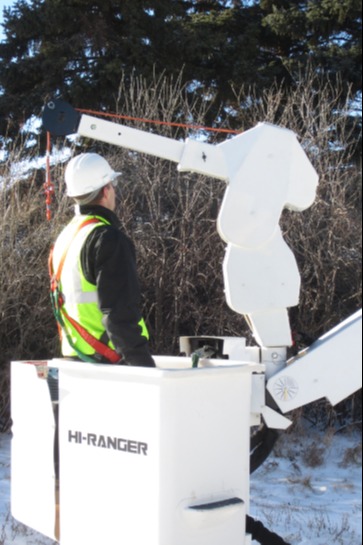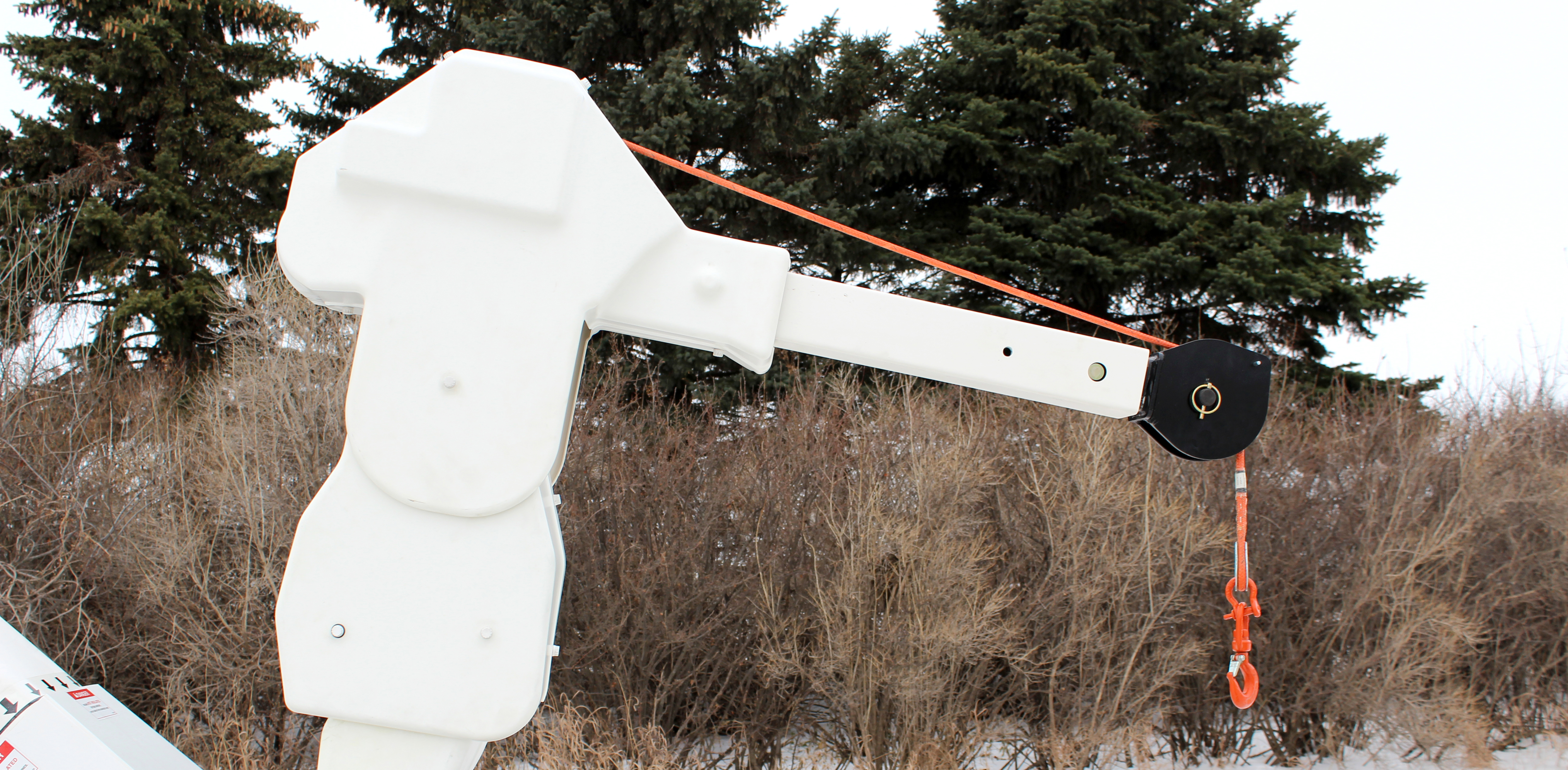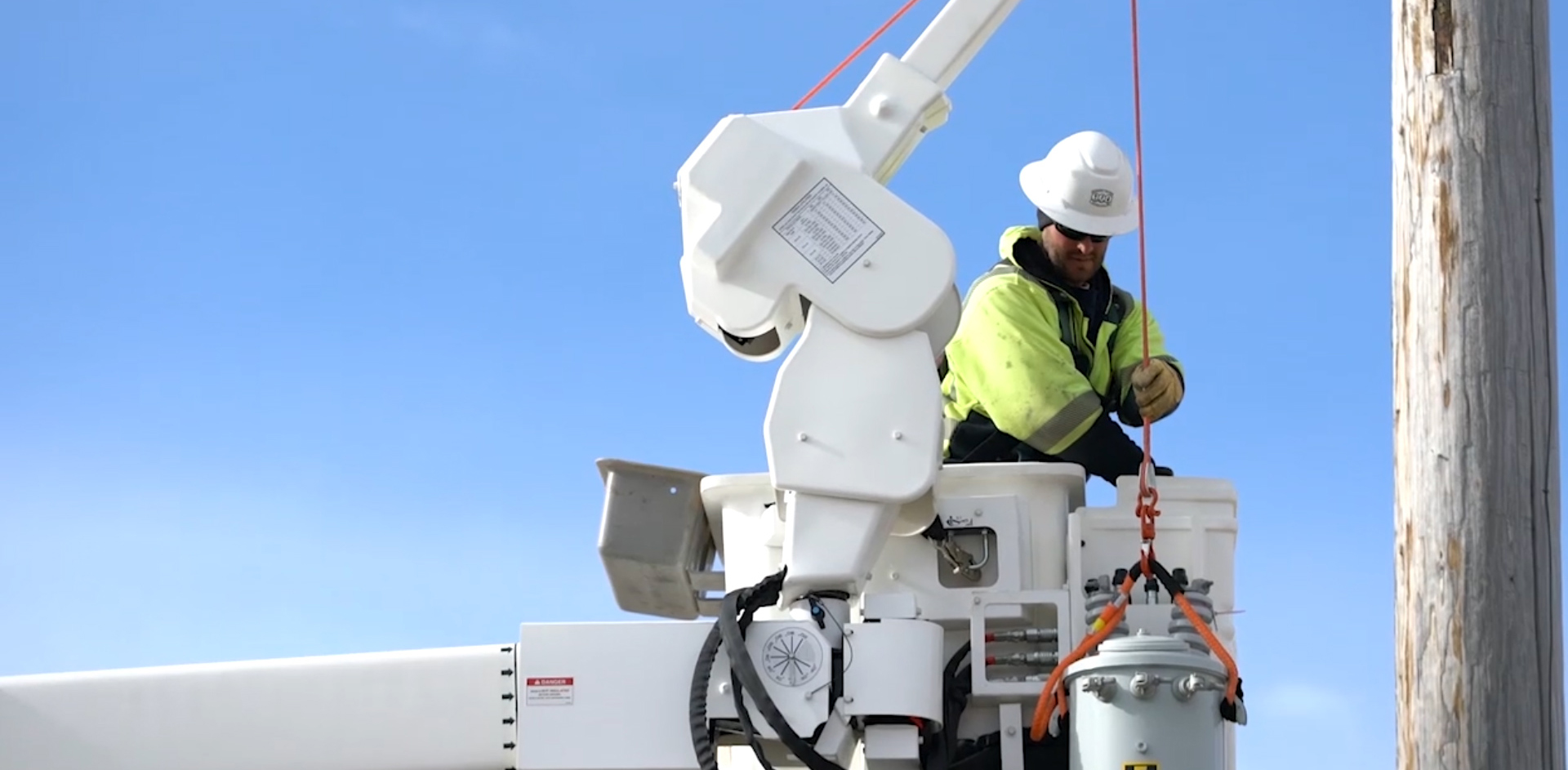Best Practices When Handling Transformers with Your Bucket Truck, Part 1: Knowing Your Jib

When it comes to lifting transformers, bucket trucks equipped with jibs are one of the handiest tools available to line workers. Compared to old methods for transformer replacement, which required workers to climb the pole and use a pully to manually lift the transformer, using a jib is less strenuous on the body, easier, and more productive. However, not all jibs are the same and the user should evaluate the type of work when choosing the equipment for the job.
There are four key areas line workers should know that help inform good practice for using jibs:
Knowing your jib
Inspecting your jib and load line
Knowing the load, and
Understanding proper setup.
Today’s post covers knowing your jib.
What type of jib is on your bucket?
There are many different styles of jibs with varying capacities available on different boom and platform configurations, including side mount, underslung, end mount, and jibs that rotate with the platform. There are also fixed length jibs, jibs that can be manually re-pinned to provide various extensions, or jibs with one or more sections that are hydraulically extendable.
Some units are designed with the load line above the jib boom and some that are below. Some jibs are equipped with sheaves that allow only non-overcenter lifting, while others can do either overcenter or non-overcenter lifting.
Is your jib insulated?
Jibs may or may not be insulated. Terex Utilities does not make insulated jibs, but if you have one that is, the jib must be treated as a hot stick and tested in accordance with OSHA 1926 and ASTM F-711 requirements for hot line tools. Even so, Terex Utilities does not recommend considering jibs as insulated, because the jib travels on the unit in a position that collects road debris. Although most jibs are made from non-conductive material, lifting loads can subject them to shock loads, which can cause cracks in the resin surface. These cracks can absorb contaminants.
In addition, as the jib travels in and out on wear pads or rollers, dirt gets embedded in the surface, increasing chances of the jib becoming conductive. Finally, the jib is typically not treated as a hot line tool for cleaning and inspecting before use.
Likewise, the winch line must be considered conductive. It is made of non-conductive material but will collect contaminants and moisture in the strands of the rope becoming conductive.
Can your jib be removed?
Some jibs or jib and winch assemblies can be removed, if the jib is not in use daily. This is a good practice to protect it. Removing the jib has the added benefit of providing crews the ability to get the equipment into tighter spaces. If the entire jib/winch is removed, any metal that is exposed needs to be covered with non-conductive material to reduce the chance of inadvertent electrical contact following the ANSI A92.2 requirements to use gloving work methods.
Lifting transformers is part of the everyday tasks conducted by utility crews. Bucket trucks equipped with jibs have made this work easier and more productive. In some cases, bucket trucks with material handling capability can also reduce the amount of equipment needed on the job site. Most important, they can also improve productivity when uses properly and safely.
Stay tuned– we’ll cover best practices when inspecting your jib and related equipment on our next post of Utility Pros.
Related Posts

Best Practices When Handling Transformers with Your Bucket Truck, Part 2: Inspecting Your Jib
Most bucket trucks sold to the utility industry are equipped with jibs, which makes it very handy to lift and handle transformers. However, not all jibs are the same and the user should evaluate the type of work when choosing the equipment for the job.
Continue Reading

Best Practices When Handling Transformers with Your Bucket Truck, Part 3: Knowing Your Load
Over the last couple of weeks, we covered the first 2 parts of this series on knowing your jib and some best practices on inspecting your jib before handling transformers in this 4-part series. This week, we move to the third area that line workers should know: Knowing Your Load.
Continue Reading

Best Practices When Handling Transformers with Your Bucket Truck, Part 4: Understanding Proper Set Up
Here is the final part of the series on Best Practices When Handling Transformers with Your Bucket Truck. Today, we cover our last part on what line workers should know: Understanding Proper Set Up...
Continue Reading

.png?sfvrsn=cfc0900d_0)